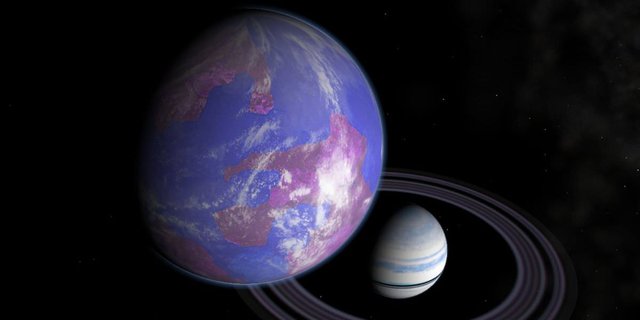Exo-moons may be inhabited by life

We have already got used to the fact that at least once a month the discovery of another portion of exoplanets is announced, among which there is often a candidate for the second Earth. Current observation capabilities do not allow us to directly detect life on the surface of one of them, but research in this direction is constantly progressing and in the near future we should be able to observe biomarkers in the atmosphere of some exoplanets.
When looking for exoplanets and traces of life on their surfaces, the question of exo-moons around them is very often overlooked. In an article published in The Astrophysical Journal, researchers from the University of California, Riverside, and the University of Southern Queensland identified more than 100 gas giants that could potentially be orbited by moons capable of supporting life.
The gas giants cannot be the habitat of the life we know, because they do not have a solid or liquid surface. In such a case, the moons around them become a natural place of exploration. Just like in the Solar System, where scientists hope to discover traces of life on Europa – the moon of Jupiter, or the Enceladus – the moon of Saturn.
There are at least 175 moons circulating around the eight planets in the Solar System. While most of them orbit Saturn and Jupiter, which are outside the living area of the Sun, the situation does not have to be the same in other systems. The inclusion of exo-moons species in our search will significantly increase the number of places where we can look for life, as Stephen Kane, the Assistant Professor of Planetary Astrophysics and a member of the UCR Center for Alternative Earth Astrobiology, said.
During the research, scientists identified 121 giant planets whose orbits are located within the residential zones of their stars. Although planets three times larger than Earth are not so common in the Universe, their orbits can accommodate up to several large, potentially life friendly moons. It would seem that such a close proximity to the gas planet is not very safe, but scientists have a different opinion. They speculate that such exo-moons receive energy not only from their star, but also from the radiation reflected from a nearby planet, which may make them more friendly places to live than Earth. As soon as life there becomes resistant to the negative effects of contact with a large amount of radiation emitted by the nearby planet. However, the existence of such an exo-moon has not yet been confirmed.
We should expect one of the exo-moons to be detected soon. Once the database has been created, scientists are ready to start intensive research using the telescopes currently available. The results of the research are also intended to help better adapt new research facilities, which in the future will make it much easier to detect exo-moons.
Please follow @technocracy to get the best of space, technology and science news. And visit our Steem powered website: Technocracy Blog.
Source: Phys.org
Warning! This user is on our black list, likely as a known plagiarist, spammer or ID thief. Please be cautious with this post!
If you believe this is an error, please chat with us in the #appeals channel in our discord.